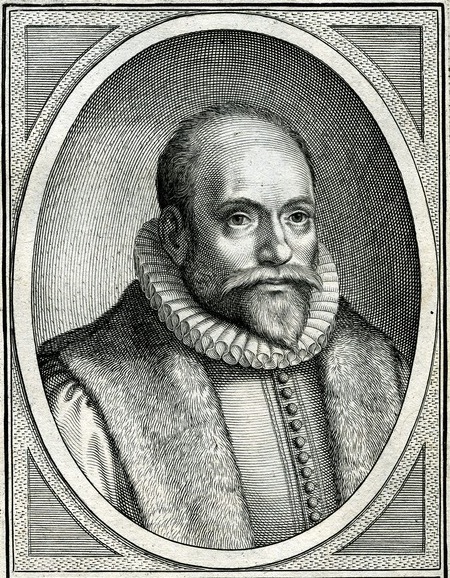|
Brian R. Murphy
Brian R. Murphy is an American virologist and former co-chief of the Laboratory of Infectious Diseases at the National Institute of Allergy and Infectious Disease. Education and career Brian Murphy was born in 1942. He completed his undergraduate B.S. degree from Wesleyan University in 1964. He then went on to medical training, completing his M.D. in 1969 at the University of Rochester Medical School, and internship the next year at Stanford University Hospital. He moved to the National Institutes of Health in 1970 as a research associate in the Laboratory of Infectious Diseases within the National Institute of Allergy and Infectious Disease. In 1983, he was promoted to head the respiratory viruses section of the Laboratory of Infectious Diseases. In 2001, he became co-chief of the Laboratory of Infectious Diseases with Robert H. Purcell. He retired from the National Institutes of Health in 2010. Brian Murphy received the inaugural Robert M. Chanock award for lifetime achiev ... [...More Info...] [...Related Items...] OR: [Wikipedia] [Google] [Baidu] |
Wesleyan University
Wesleyan University ( ) is a private liberal arts university in Middletown, Connecticut. Founded in 1831 as a men's college under the auspices of the Methodist Episcopal Church and with the support of prominent residents of Middletown, the college was the first institution of higher education to be named after John Wesley, the founder of Methodism. It is now a secular institution. The college accepted female applicants from 1872 to 1909, but did not become fully co-educational until 1970. Before full co-education, Wesleyan alumni and other supporters of women's education established Connecticut College for women in 1912. Wesleyan, along with Amherst and Williams colleges, is part of "The Little Three", also traditionally referred to as the Little Ivies. Its teams compete athletically as a member of the NESCAC. Wesleyan University has distinguished alumni in the arts and sciences, literature, politics and government, business, journalism, and academia. Its alumni include ... [...More Info...] [...Related Items...] OR: [Wikipedia] [Google] [Baidu] |
Parainfluenza Virus
Human parainfluenza viruses (HPIVs) are the viruses that cause human parainfluenza. HPIVs are a paraphyletic group of four distinct single-stranded RNA viruses belonging to the ''Paramyxoviridae'' family. These viruses are closely associated with both human and veterinary disease. Virions are approximately 150–250 nm in size and contain negative sense RNA with a genome encompassing about 15,000 nucleotides. The viruses can be detected via cell culture, immunofluorescent microscopy, and PCR. HPIVs remain the second main cause of hospitalisation in children under 5 years of age for a respiratory illness (only Respiratory syncytial virus (RSV) causes more respiratory hospitalisations for this age group). Classification The first HPIV was discovered in the late 1950s. The taxonomic division is broadly based on antigenic and genetic characteristics, forming four major serotypes or clades, which today are considered distinct viruses. These include: HPIVs belong to two gene ... [...More Info...] [...Related Items...] OR: [Wikipedia] [Google] [Baidu] |
University Of Rochester Alumni
A university () is an institution of higher (or tertiary) education and research which awards academic degrees in several academic disciplines. ''University'' is derived from the Latin phrase ''universitas magistrorum et scholarium'', which roughly means "community of teachers and scholars". Universities typically offer both undergraduate and postgraduate programs. The first universities in Europe were established by Catholic Church monks. The University of Bologna (), Italy, which was founded in 1088, is the first university in the sense of: *being a high degree-awarding institute. *using the word ''universitas'' (which was coined at its foundation). *having independence from the ecclesiastic schools and issuing secular as well as non-secular degrees (with teaching conducted by both clergy and non-clergy): grammar, rhetoric, logic, theology, canon law, notarial law.Hunt Janin: "The university in medieval life, 1179–1499", McFarland, 2008, , p. 55f.de Ridder-Symoens, Hil ... [...More Info...] [...Related Items...] OR: [Wikipedia] [Google] [Baidu] |
National Institutes Of Health Faculty
National may refer to: Common uses * Nation or country ** Nationality – a ''national'' is a person who is subject to a nation, regardless of whether the person has full rights as a citizen Places in the United States * National, Maryland, census-designated place * National, Nevada, ghost town * National, Utah, ghost town * National, West Virginia, unincorporated community Commerce * National (brand), a brand name of electronic goods from Panasonic * National Benzole (or simply known as National), former petrol station chain in the UK, merged with BP * National Car Rental, an American rental car company * National Energy Systems, a former name of Eco Marine Power * National Entertainment Commission, a former name of the Media Rating Council * National Motor Vehicle Company, Indianapolis, Indiana, USA 1900-1924 * National Supermarkets, a defunct American grocery store chain * National String Instrument Corporation, a guitar company formed to manufacture the first ... [...More Info...] [...Related Items...] OR: [Wikipedia] [Google] [Baidu] |
Wesleyan University Alumni
Wesleyan theology, otherwise known as Wesleyan–Arminian theology, or Methodist theology, is a theological tradition in Protestant Christianity based upon the ministry of the 18th-century evangelical reformer brothers John Wesley and Charles Wesley. More broadly it refers to the theological system inferred from the various sermons (e.g. the Forty-four Sermons), theological treatises, letters, journals, diaries, hymns, and other spiritual writings of the Wesleys and their contemporary coadjutors such as John William Fletcher. In 1736, the Wesley brothers travelled to the Georgia colony in America as Christian missionaries; they left rather disheartened at what they saw. Both of them subsequently had "religious experiences", especially John in 1738, being greatly influenced by the Moravian Christians. They began to organize a renewal movement within the Church of England to focus on personal faith and holiness. John Wesley took Protestant churches to task over the nature of sa ... [...More Info...] [...Related Items...] OR: [Wikipedia] [Google] [Baidu] |
American Molecular Biologists
American(s) may refer to: * American, something of, from, or related to the United States of America, commonly known as the "United States" or "America" ** Americans, citizens and nationals of the United States of America ** American ancestry, people who self-identify their ancestry as "American" ** American English, the set of varieties of the English language native to the United States ** Native Americans in the United States, indigenous peoples of the United States * American, something of, from, or related to the Americas, also known as "America" ** Indigenous peoples of the Americas * American (word), for analysis and history of the meanings in various contexts Organizations * American Airlines, U.S.-based airline headquartered in Fort Worth, Texas * American Athletic Conference, an American college athletic conference * American Recordings (record label), a record label previously known as Def American * American University, in Washington, D.C. Sports teams Soccer * ... [...More Info...] [...Related Items...] OR: [Wikipedia] [Google] [Baidu] |
1942 Births
Year 194 ( CXCIV) was a common year starting on Tuesday (link will display the full calendar) of the Julian calendar. At the time, it was known as the Year of the Consulship of Septimius and Septimius (or, less frequently, year 947 ''Ab urbe condita''). The denomination 194 for this year has been used since the early medieval period, when the Anno Domini calendar era became the prevalent method in Europe for naming years. Events By place Roman Empire * Emperor Septimius Severus and Decimus Clodius Septimius Albinus Caesar become Roman Consuls. * Battle of Issus: Septimius Severus marches with his army (12 legions) to Cilicia, and defeats Pescennius Niger, Roman governor of Syria. Pescennius retreats to Antioch, and is executed by Severus' troops. * Septimius Severus besieges Byzantium (194–196); the city walls suffer extensive damage. Asia * Battle of Yan Province: Warlords Cao Cao and Lü Bu fight for control over Yan Province; the battle lasts for over ... [...More Info...] [...Related Items...] OR: [Wikipedia] [Google] [Baidu] |
West Nile Virus
West Nile virus (WNV) is a single-stranded RNA virus that causes West Nile fever. It is a member of the family ''Flaviviridae'', from the genus ''Flavivirus'', which also contains the Zika virus, dengue virus, and yellow fever virus. The virus is primarily transmitted by mosquitoes, mostly species of '' Culex''. The primary hosts of WNV are birds, so that the virus remains within a "bird–mosquito–bird" transmission cycle. The virus is genetically related to the Japanese encephalitis family of viruses. Humans and horses both exhibit disease symptoms from the virus, and symptoms rarely occur in other animals. Identification of the human disease was first made in 1937 in Uganda and in the latter half of the 20th century spread to many other parts of the world. Structure Like most other flaviviruses, WNV is an enveloped virus with icosahedral symmetry. Electron microscope studies reveal a 45–50 nm virion covered with a relatively smooth protein shell; this structur ... [...More Info...] [...Related Items...] OR: [Wikipedia] [Google] [Baidu] |
Dengue Virus
''Dengue virus'' (DENV) is the cause of dengue fever. It is a mosquito-borne, single positive-stranded RNA virus of the family ''Flaviviridae''; genus ''Flavivirus''. Four serotypes of the virus have been found, a reported fifth has yet to be confirmed,Dwivedi, V. D., Tripathi, I. P., Tripathi, R. C., Bharadwaj, S., & Mishra, S. K. (2017). Genomics, proteomics and evolution of ''Dengue virus''. Briefings in functional genomics.16(4): 217–227, https://doi.org/10.1093/bfgp/elw040 all of which can cause the full spectrum of disease. Nevertheless, scientists' understanding of dengue virus may be simplistic as, rather than distinct antigenic groups, a ''continuum'' appears to exist. This same study identified 47 strains of ''dengue virus''. Additionally, coinfection with and lack of rapid tests for ''zika virus'' and ''chikungunya'' complicate matters in real-world infections. ''Dengue virus'' has increased dramatically within the last 20 years, becoming one of the worst mosquito ... [...More Info...] [...Related Items...] OR: [Wikipedia] [Google] [Baidu] |
Influenza Virus
''Orthomyxoviridae'' (from Greek ὀρθός, ''orthós'' 'straight' + μύξα, ''mýxa'' ' mucus') is a family of negative-sense RNA viruses. It includes seven genera: '' Alphainfluenzavirus'', '' Betainfluenzavirus'', '' Gammainfluenzavirus'', '' Deltainfluenzavirus'', '' Isavirus'', '' Thogotovirus'', and '' Quaranjavirus''. The first four genera contain viruses that cause influenza in birds (see also avian influenza) and mammals, including humans. Isaviruses infect salmon; the thogotoviruses are arboviruses, infecting vertebrates and invertebrates (such as ticks and mosquitoes). The Quaranjaviruses are also arboviruses, infecting vertebrates (birds) and invertebrates ( arthropods). The four genera of Influenza virus that infect vertebrates, which are identified by antigenic differences in their nucleoprotein and matrix protein, are as follows: * '' Alphainfluenzavirus'' infects humans, other mammals, and birds, and causes all flu pandemics * '' Betainfluenzavir ... [...More Info...] [...Related Items...] OR: [Wikipedia] [Google] [Baidu] |






